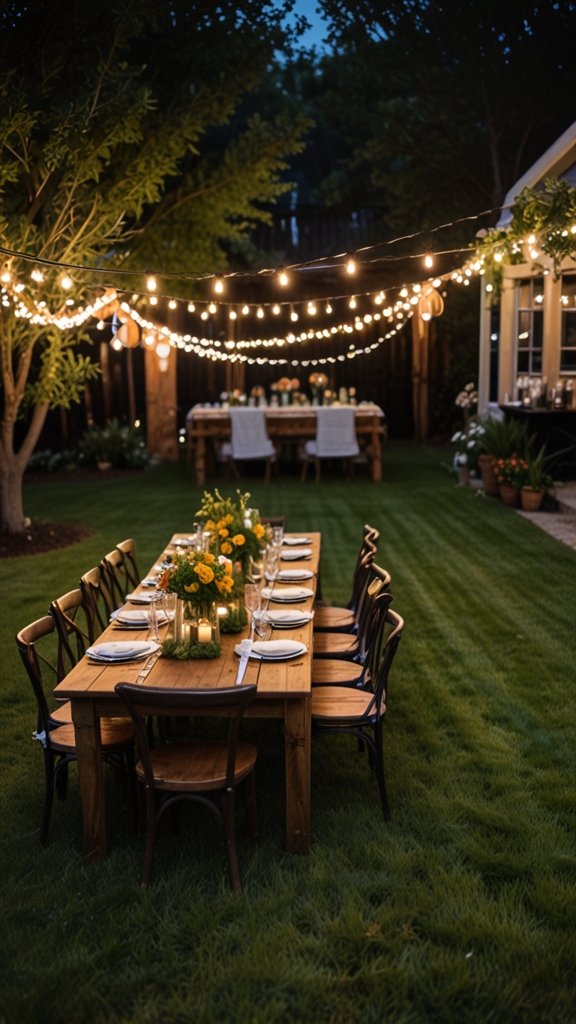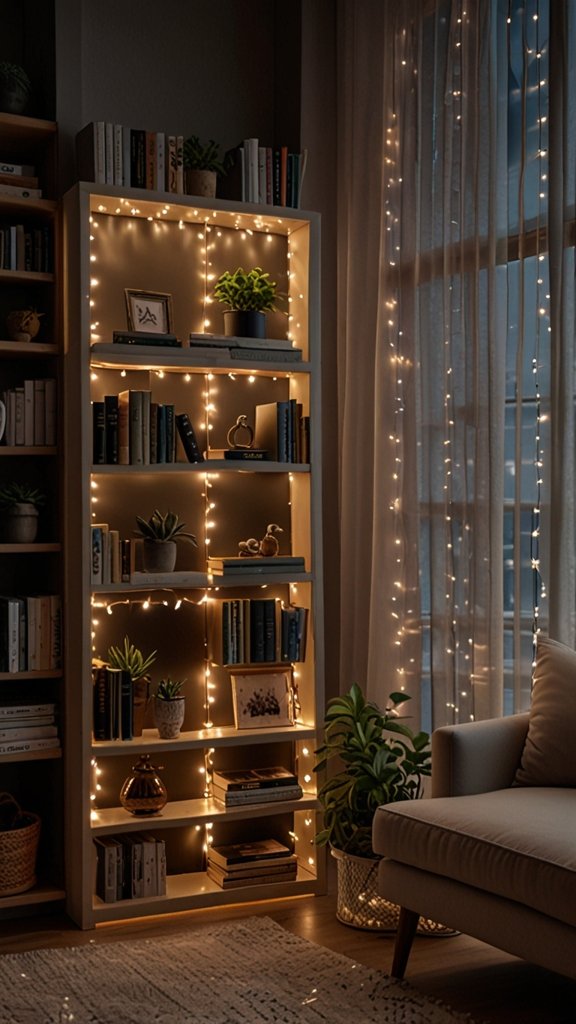
As an outdoor enthusiast, I’ve always been fascinated by what lighting can bring to our outdoor spaces. But let me tell you, not all outdoor lighting is created equal! That is why I’m excited to share what I have learned over the years on solar string light safety for outdoor use.
Solar String Light Safety Tips, Why Solar String Lights?
Before we dive deep into the safety aspects, let’s talk about why solar-powered outdoor lighting has become such a hit. Did you know that the popularity of these eco-friendly illumination options has skyrocketed over 300% in just the last five years? No wonder – they’re cost-effective, energy-efficient, and can transform any backyard.
As someone who’s experimented with various outdoor lighting options, I can confidently say that solar string lights are perfect for the outdoors. But like any electrical device, they come with their own set of safety considerations. So, let’s shed some light on how to enjoy these twinkling lights safely!

Understanding Solar String Lights
Solar string lights consist of four main components: a solar panel, a battery, LED lights, and wiring. The solar panel soaks up sunlight during the day, converting it into electrical energy stored in the battery. When dusk falls, the battery powers the LED lights, creating that enchanting ambiance we all love.
Choosing the Right Solar String Lights for Outdoor Use
Now, I’ll be the first to admit that when I started my journey with outdoor solar lighting, I made some rookie mistakes especially when it comes to outdoor use. Here’s what I’ve learned about choosing the right lights:
- Weather-resistant ratings are crucial: Look for IP65 or higher for outdoor use. Trust me, you don’t want your lights giving up after the first rainstorm!
- Reputable brands matter: I’ve found that spending a little more on quality brands pays off in the long run. They often have better warranties and customer support.
- Check for certifications: UL or ETL listings are good indicators of safety standards.
Remember, we’re looking for lights that can withstand the elements while providing reliable illumination. It’s worth taking the time to research and invest in quality products.
Proper Installation Techniques

Alright, you’ve got your solar string lights – now what? Installation is key to both safety and longevity. Here are some tips I swear by:
- Plan your layout: Before you start hanging, take a walk around your space and plan where you want the lights. Consider the location of your solar panel – it needs maximum sun exposure!
- Use the right tools: A sturdy ladder, outdoor-rated zip ties or hooks, and maybe a helper (thanks, honey!) make the job much easier and safer.
- Secure against wind: We learned this the hard way after a particularly blustery night. Use guide wires or extra attachment points to keep your lights in place.
One trick I love is using clear command hooks for temporary installations. They’re great for party setups and don’t damage your surfaces!
Maintenance and Care for Longevity
I’ll let you in on a little secret – the key to keeping your solar string lights looking good year after year is regular maintenance. Here’s my routine:
- Monthly cleaning: A gentle wipe-down of the solar panel and lights keeps them operating at peak efficiency.
- Seasonal check-ups: Before winter hits, I do a thorough inspection of all connections and replace any damaged parts.
- Proper storage: If you live in an area with harsh winters like I do, consider taking down your lights and storing them in a dry, cool place.
I’ve found that a little TLC goes a long way in extending the life of my solar lights. Plus, it gives me a chance to change up my design each season!
Electrical Safety Considerations
I know what you’re thinking – “They’re solar-powered, so there’s no electrical risk, right?” Well, not quite. While solar string lights operate at lower voltages than traditional electrical lights, there are still some safety precautions we need to keep in mind:
- Never mix and match: Stick to one brand and model when connecting multiple strings. Mixing different types can lead to overloading.
- Check for frayed wires: Regularly inspect your lights for any signs of wear and tear, especially after storms.
- Keep connections dry: Use weatherproof junction boxes for any connections that might be exposed to moisture.
Remember, even low-voltage systems can pose a risk if not handled properly. When in doubt, consult a professional!
Weather-Related Safety Precautions
Living in an area with four distinct seasons, I’ve learned a thing or two about protecting my solar string lights from Nature’s mood swings. Here are some weather-specific tips:
- Winter wonderland: If you’re leaving your lights up during winter, gently brush off any snow accumulation from the solar panels. A snow-covered panel can’t charge!
- Summer scorchers: Extremely high temperatures can affect battery life. If possible, position your solar panel in a spot that gets morning sun but afternoon shade.
- Stormy weather: If severe storms are forecast, it’s best to take down your lights temporarily. Better safe than sorry!
I once left my lights up during a particularly nasty thunderstorm. Let’s just say, that replacing a whole set of lights taught me a valuable lesson.
Fire Safety and Prevention
Fire safety is something I take very seriously, especially when it comes to outdoor lighting. While the risk is low with solar-powered lights, it’s not zero. Here are my top fire safety tips:
- Keep clear of flammables: Ensure your lights aren’t in direct contact with dry leaves, paper decorations, or other easily ignitable materials.
- Regular inspections: Check for any signs of overheating, especially around the battery compartment.
- Have a plan: Keep a fire extinguisher easily accessible, just in case.
We love creating a cozy atmosphere on our deck with lots of soft textiles and cushions. But I always make sure to keep these away from any lighting, solar or otherwise.
Child and Pet Safety
As a pet owner, I’m always thinking about how to make our outdoor space safe for the whole family. Here’s how I ensure our solar string lights are kid and pet-friendly:
- Out of reach: Install lights high enough that curious hands (or paws) can’t reach them.
- Secure wiring: Use cord concealers or run wires along the top of fences where they can’t be tugged or chewed.
- Education: We’ve made it a family rule that solar lights are not toys. It’s never too early to teach kids about electrical safety!
Our cat once got tangled in a low-hanging string of lights. After that hair-raising experience (pun intended), we made sure all our lights were well out of pet-reaching range!
Eco-Friendly Disposal and Recycling
One of the reasons I love solar string lights is their eco-friendly nature. But what happens when they reach the end of their life? Here’s how we can dispose of them responsibly:
- Check local recycling programs: Many communities have specific drop-off points for electronic waste.
- Separate components: The solar panel, battery, and lights often need to be recycled separately.
- Upcycle: Get creative! I’ve seen some amazing DIY projects using old solar light components.
Last year, I turned some of our old solar light strings into a funky light-up garden sculpture. It’s now a great conversation piece in our yard!
Conclusion
Wow, who knew there was so much to consider when it comes to solar string light safety? But don’t let all this information dim your enthusiasm! With these guidelines in hand, you’re all set to create a dazzling outdoor display that’s as safe as it is stunning.
Remember, a little caution goes a long way. So go ahead, light up the night responsibly, and bask in the warm glow of your safely installed solar string lights!
As for me, I’ll be out on my patio, enjoying the magical ambiance created by my carefully installed and maintained solar string lights. Why don’t you join me? Here’s to many warm summer evenings lit by the gentle glow of solar power!
Stay safe and keep twinkling, friends!



